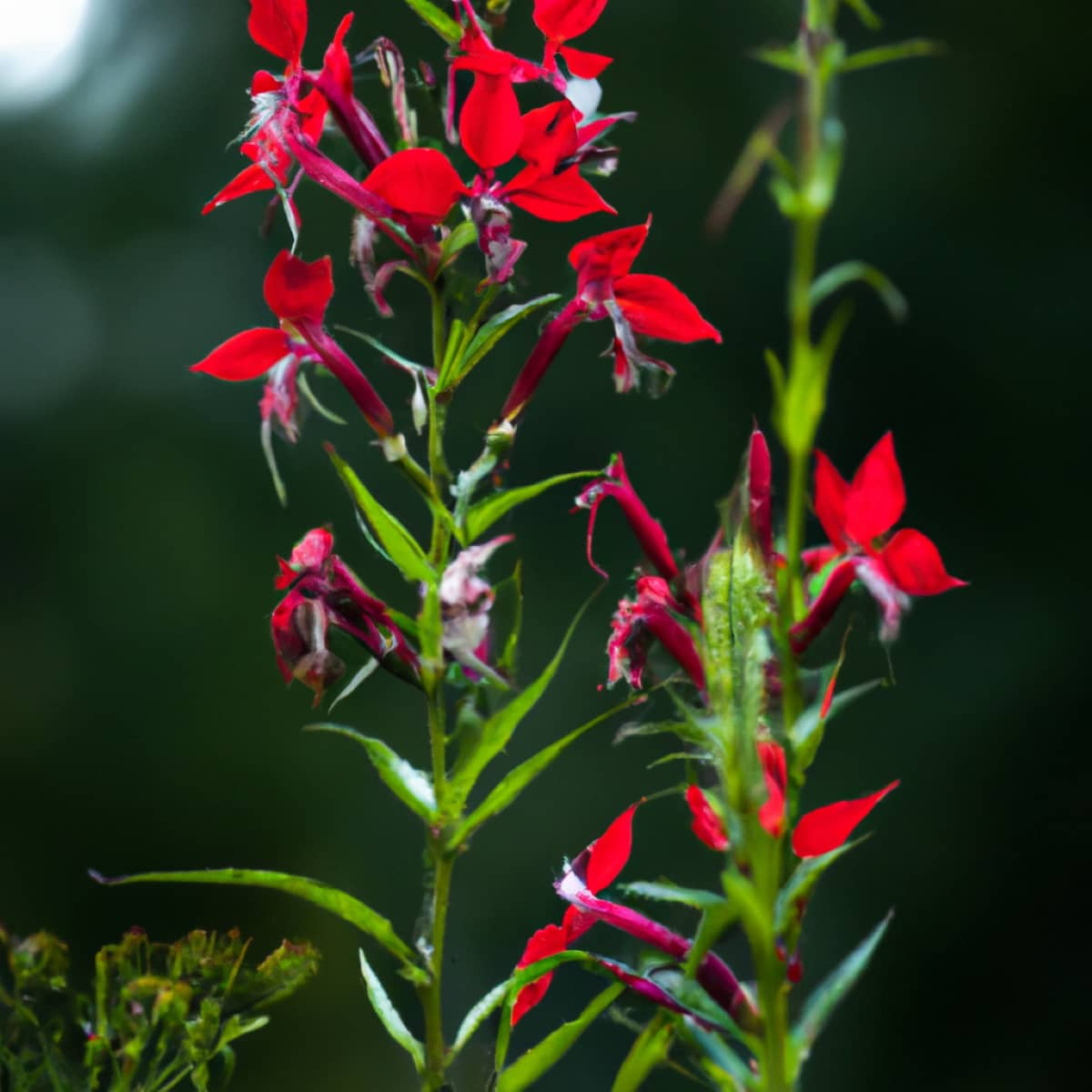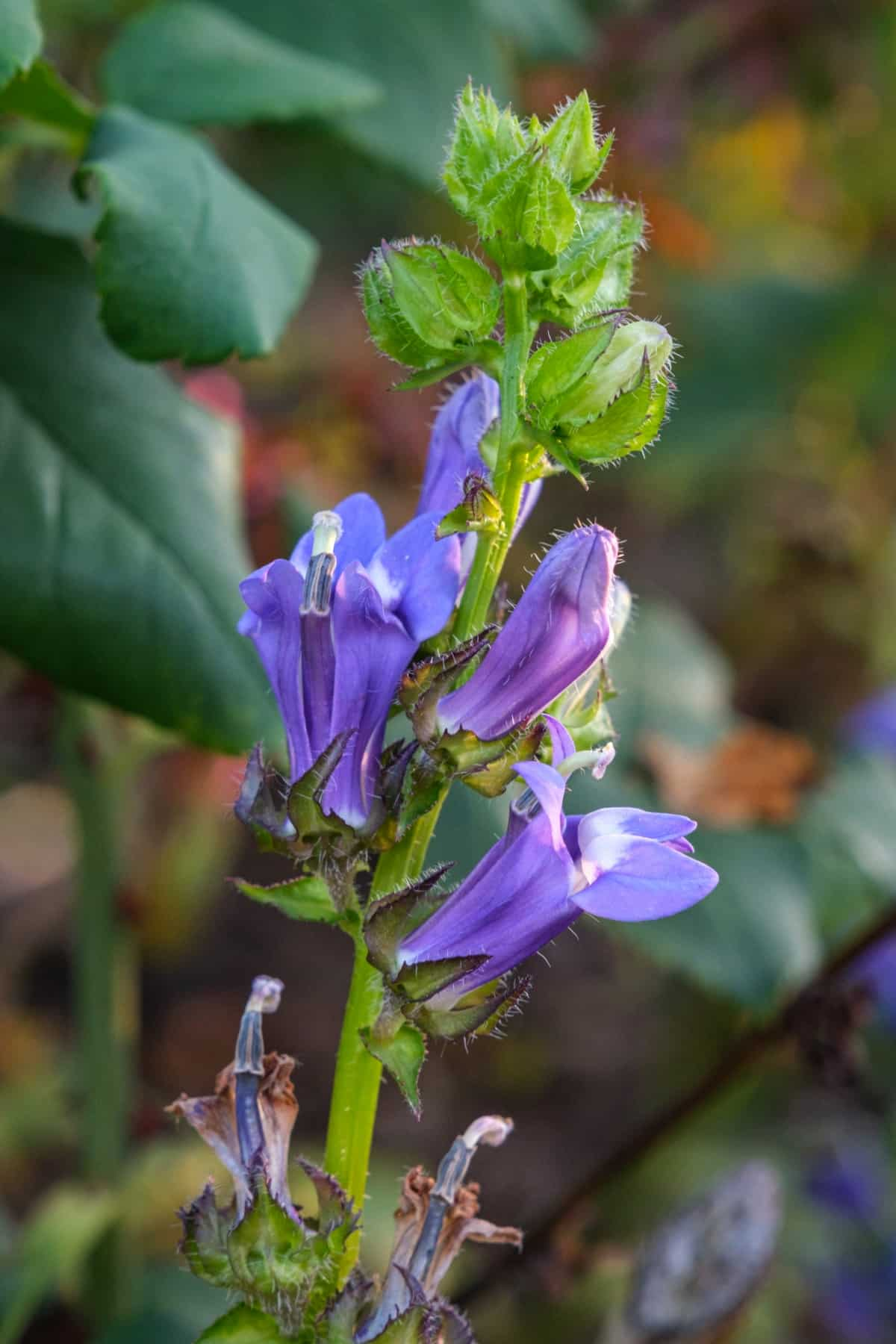Cardinal Flowers, scientifically known as Lobelia Cardinalis, is a native plant of North America that belongs to the Campanulaceae family. These stunning flowers bloom from mid-summer to early fall and are characterized by their striking red color, which makes them stand out in any garden.

How to Plant and Care for Cardinal Flowers
Choosing the Ideal Soil and Location for Planting Cardinal Flowers
- The ideal soil and location are crucial for their growth and success. These vibrant plants prefer slightly acidic soil with a pH of 5.5-7.0. Ensuring the soil is well-draining is essential because the Cardinal Flower doesn’t tolerate standing water.
- The ideal location for planting Cardinal flowers would be in partial shade or full sun, depending on your climate. If you live in an area with hot summers, it’s best to plant them in partial shade where they will receive some protection from intense afternoon sun.
Growing Cardinal Flowers from Seeds: A Beginner’s Tutorial
- Growing Cardinal flowers from seeds can be an exciting and rewarding experience if you’re a beginner gardener.
- Choose the right time to plant your seeds. You’ll want to sow them in the late winter or early spring, around six weeks before the last expected frost date in your area.
- To prepare for planting, mix equal parts of sand and peat moss. Moisten the mixture slightly so that it is damp but not soaking wet.
- Next, sprinkle the Cardinal flower seeds over the surface of this mixture and lightly press them into it with your fingertips. Don’t bury them too deep.
- Cover your containers with plastic wrap or a clear plastic lid to create a mini greenhouse effect that will keep moisture locked in until germination occurs.
- Place your containers near a bright window where they can receive plenty of indirect sunlight during their growth period.
- Once seedlings have emerged and grown several leaves each, transplant them outdoors into rich soil with good drainage, water regularly as needed, and watch as they bloom into stunning red spikes come summertime.
Caring for Cardinal Flower Plants: Essential Tips for Success
- Watering – Cardinal flowers need regular watering, especially during the hot summer. Water them deeply once a week or more frequently if the soil feels dry to the touch.
- Mulching – A layer of mulch around the base of your Cardinal plants will help retain moisture in the soil and suppress weeds. Use organic materials like shredded leaves or bark chips.
- Deadheading – Removing spent blooms regularly will encourage new growth and prolong the blooming season. Cut back flower stalks as soon as they start to fade.
- Staking – Tall varieties of Cardinal flowers may require staking to prevent them from falling over due to wind or rain. Use bamboo stakes or other supports that won’t damage delicate stems.
- Pest Control – Keep an eye out for common pests like aphids, spider mites, and whiteflies which can cause damage to foliage and flowers. Treat infested plants with insecticidal soap or neem oil spray.
Pruning Techniques for Maintaining Cardinal Flowers’ Shape and Vitality
- Regular pruning helps to encourage new growth, prevent disease, and improve overall plant health.
- The best time to prune these plants is early spring before new growth. This allows you to remove any dead or damaged branches without harming the healthy parts of the plant.
- Examine your Cardinal flower plant closely and look for diseased or damaged branches. Using sharp pruning shears, make a clean cut where the branch meets another healthy branch or stem.
- In addition to regular pruning, deadheading spent blooms can also help encourage new growth and prolong the blooming season. Snip off any faded flowers with your pruning shears as soon as they begin to wilt.
In case you missed it: How to Plant and Care for Mexican Honeysuckle: Growing Instructions

Protecting Cardinal Flowers from Pests and Diseases: Prevention and Control Methods
- Cardinal flowers are beautiful and desirable plants for both gardeners and hummingbirds. However, like every other plant, pests, and diseases can also attack Cardinal flowers. Therefore, taking proactive measures to protect them from these threats is crucial.
- One way to prevent pest infestations is using natural repellents like neem oil or insecticidal soap. These products can deter pests while keeping the plant healthy without causing harm to beneficial insects such as bees.
- Companion planting is another effective method of safeguarding your Cardinal flowers against pests. Planting herbs like Mint, Basil, or Oregano alongside the Cardinal flower will help repel harmful insects naturally.
- To prevent diseases from affecting your beloved Cardinal flower plants, ensure that they have adequate airflow around them by avoiding overcrowding when planting them. Also, avoid overhead watering, which creates a damp environment that promotes fungal growth. Additionally, you should ensure proper sanitation by regularly removing dead leaves or stems as they are vectors for disease pathogens transferable among plants.
Fertilizing Cardinal Flowers: Best Practices for Vibrant Blooms
- Fertilizing is an essential aspect of caring for Cardinal Flowers. To achieve vibrant blooms, using the right fertilizer and adopting best practices are important.
- The main step to fertilizing Cardinal Flowers is knowing when to apply the fertilizer. It’s advisable to feed your plants during their active growing season, usually from spring through summer.
- When choosing a fertilizer for your Cardinal Flowers, choose water-soluble or liquid types that provide balanced nutrients. This will ensure that all elements the plant requires are available in equal amounts.
- Before applying any fertilizer, make sure you dilute it according to the instructions on the package label. Overuse of fertilizers can lead to chemical burns or damage roots’ growth and cause detrimental effects on blooming outcomes.
- Always water your Cardinal flowers thoroughly after feeding with a properly diluted solution – this helps distribute nutrients equally throughout its soil bed.
Understanding the Blooming Season of Cardinal Flowers
- These vibrant red flowers typically bloom from July to September in most regions, but this can change depending on the climate and growing conditions. In warmer climates, Cardinal flowers may start blooming as early as June. Conversely, in cooler regions with shorter summers, they may not begin to flower until August. Monitoring your plant’s growth and adjusting your expectations are important.
- Deadhead blooms regularly throughout the season to encourage a longer bloom period. This will promote new plant growth and keep your plants fresh and healthy.
Watering Schedule for Healthy Growth of Cardinal Flower Plants
Proper watering is crucial for the healthy growth of Cardinal flower plants. These native beauties require consistent moisture in their soil, but not so much that they become waterlogged.
When planting your Cardinal flower, water it thoroughly and deeply. This will help the plant roots establish themselves in the soil and encourage strong growth. Remember that overwatering can be as harmful as underwatering, so always monitor your plants closely and adjust your watering schedule accordingly.
When and How to Harvest Cardinal Flowers?
- It’s important to wait until the blooms have fully opened before cutting them from the plant. This will ensure that you get maximum color and fragrance.
- When harvesting Cardinal Flowers, always use sharp scissors or pruners. Make sure to cut the stem at an angle to help the flower last longer in your vase.
- Remove any leaves submerged in water if you plan on using your harvested flowers for arrangements or bouquets. This will help prevent bacteria growth and prolong the life of your arrangement.
- Cardinal Flowers can also be dried for long-lasting floral arrangements. To dry these flowers, hang them upside down in a dark place with good air circulation until completely dry.
In case you missed it: How to Plant and Care for Agave Succulent: Growing Instructions

Conclusion
The Cardinal Flower’s eye-catching red blooms stand out in any landscape and can reach up to 4 feet tall. Its foliage is lance-shaped with toothed edges and deep green color, adding an extra layer of visual interest to the garden.
- Feed Your Flock for Less: Top 10 Tips to Save on Chicken Feed
- Ultimate Guide to Ossabaw Island Hog: Breeding, Raising, Diet, and Care
- Hatching Answers: The Top 10 Reasons Your Chickens Aren’t Laying Eggs
- Eggs and Economics: Breaking Down the Cost of Raising Backyard Chickens
- Defend Your Greens: Proven Methods to Keep Iguanas Out of Your Garden
- Ultimate Guide to Cinnamon Queen Chicken: A Comprehensive Guide for Beginners
- Ultimate Guide to California Tan Chicken: Breeding, Raising, Diet, Egg-Production and Care
- Ultimate Guide to Marsh Daisy Chicken: Breeding, Raising, Diet, and Care
- 10 Types of Chicken Farming Businesses You Can Start for Profits